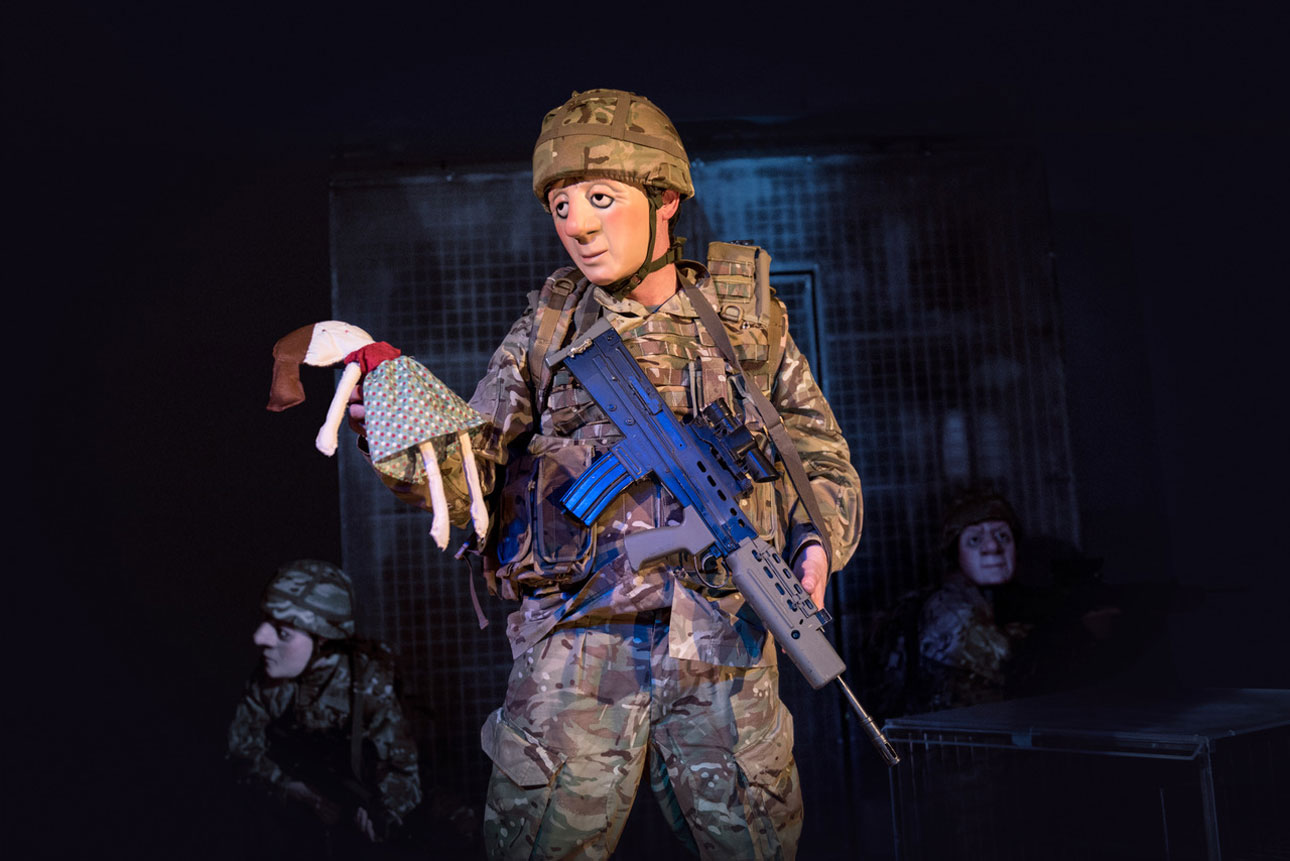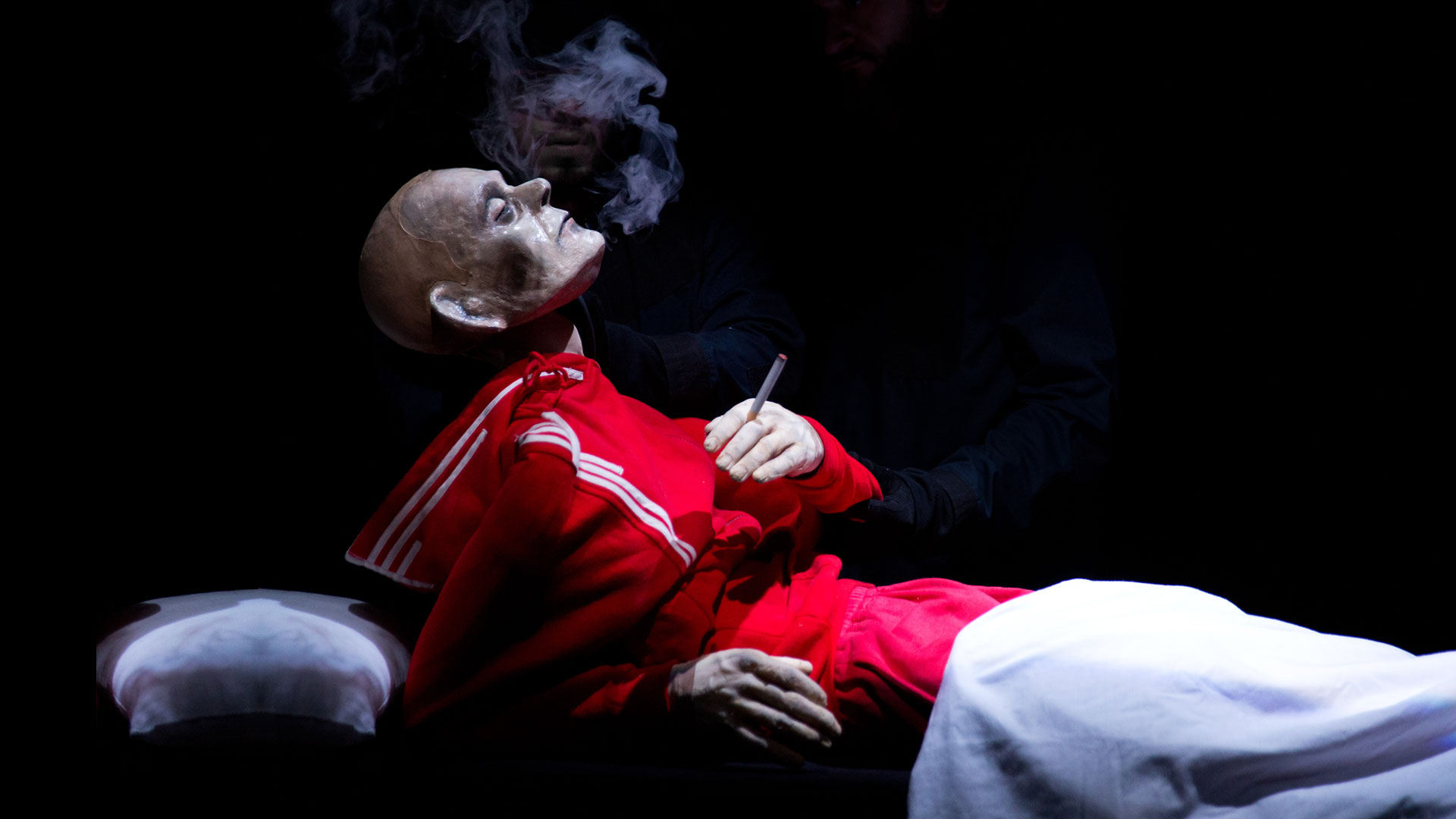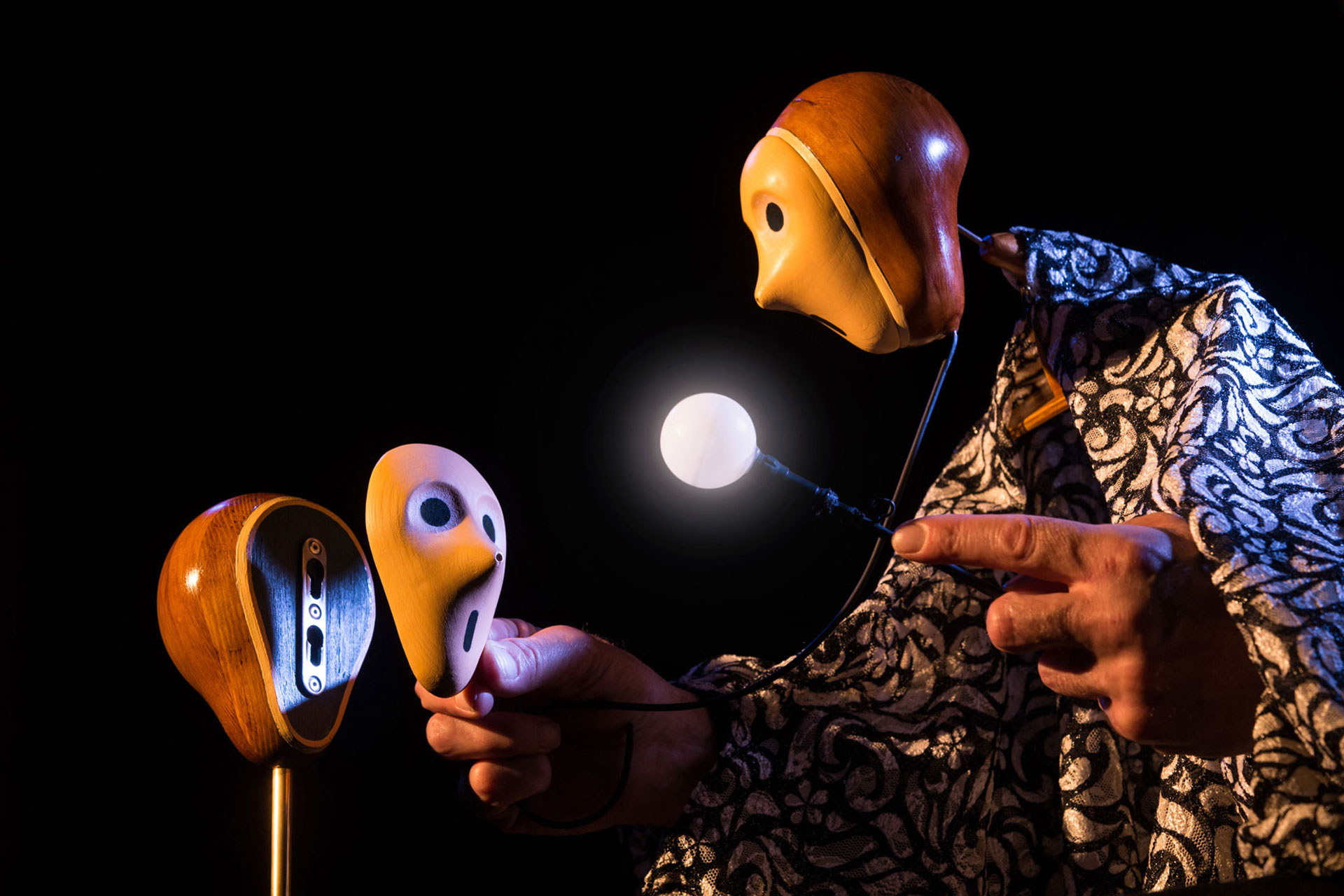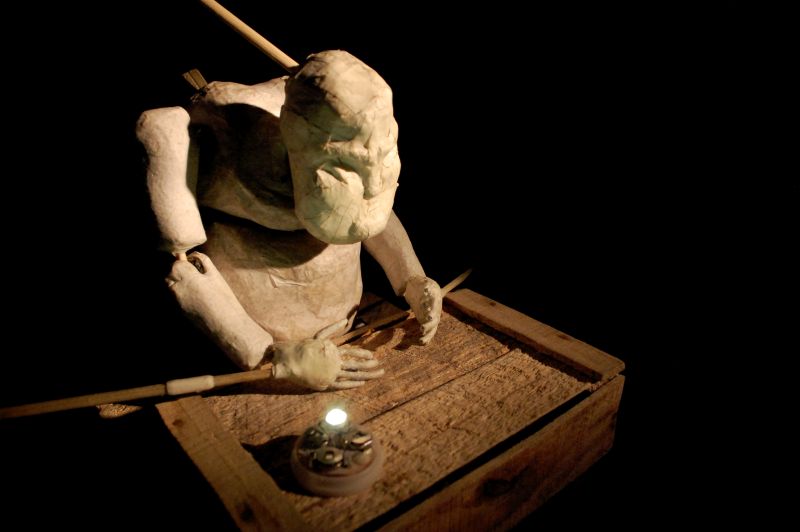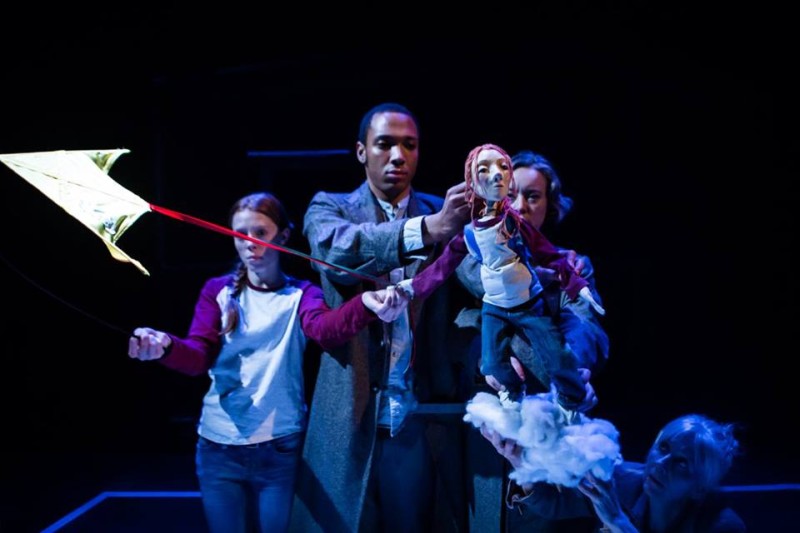In the distinctive Vamos style (full-masked, characterful, human stories, told with pathos and humour) we are pitched straight into an absolutely recognisable situation: a girl and her older brother, a playful and familiar quarrel, a time in the recent past (but definitely past), and a hint of something more urgent, darker, on the horizon – all told absolutely wordlessly, conveyed by music and costume and staging and Russel Dean’s exactly-expressive-enough masks yes, but mostly conveyed by the detail in the physical performances, each beat clear and precise, each little action and reaction telling us something compelling about the characters, their feelings, their stories.
A Brave Face is the story of a young man who joins the British Army, alongside his best friend, in 2009; they are posted to Afghanistan. All of this is told, but the meat of the piece is on the protagonist’s return home, his Post Traumatic Stress told vividly through his irrationality, relationship-threatening moods, and fears. Vamos spent two years researching A Brave Face and it is built on the stories and experiences shared with them by ex-combat soldiers and their families.
Even on its very first night the show is near-flawlessly performed, and it is beautifully constructed, with never a missed beat or dull moment. Janie Armour’s music also works particularly well in keeping the momentum of the wordless performance moving without ever over-selling its emotions. This is radically unpretentious, truthful, accessible theatre, and Vamos (newly an Arts Council of England National Portfolio Organisation from 2018) are keepers of the flame for full mask performance in the UK.
However, a friend in the audience said afterwards that he felt the artistry was great but the story really lacking – if a text-driven play had presented this narrative it would be laughed out of town, he suggested. It’s true that events are straightforward, linear and on the whole very predictable here: the upbeat innocents off to war; the meeting with a different reality; the painful tragedy and aftermath; the sweet beginnings of healing through human contact. The answer to the complaint is that complex narrative is arguably not what this form is for: its primary method is empathy – every moment relying on audience contact and recognition – and so drawing us deep into the material is prized over laying out a complex surface.
There is a quibble that sticks for me, though. I remain troubled by how resolutely apolitical the show is. There is nothing overt about the bigger story of what led the British young men to this tragedy – either in broader terms or in their own situations. And the only Afghan we see is Khatera, a young girl with a doll who playfully befriends the soldiers, and suffers for it, in a rare moment that feels like heavy-handed storytelling, and an overly-symbolic character in a piece necessarily staffed with archetypes. But she would have to work impossibly hard to represent all of the experiences of the other people who suffered terribly in this conflict (and continue to do so). Now, I understand that the show isn’t attempting to do this: it’s a piece about the experiences of British veterans. But nevertheless I am left wondering if this history might be too close, still, for a British artist to so completely focus on this experience.

